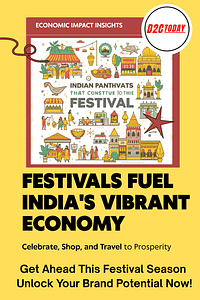Picture this: It’s a bustling weekday evening in 2025. In a vibrant Mumbai neighbourhoods, a young professional, Aarav, realizes he’s out of milk, bread, and his favourite brand of instant coffee. A meeting with international clients looms in 20 minutes. Aarav reaches for his phone, opens a quick commerce app, and orders the essentials. By the time he’s refreshed himself and prepped his work desk, the doorbell rings. A neatly packed grocery bag has arrived—exactly 15 minutes after he hit order and in some cases the delivery time is just few minutes. the consumer behaviours and the way they expect is changing the landscape of modern retail in India and quick commerce in India is playing pivotal role.
This is the promise of quick commerce (q-commerce) in India: fast, frictionless, and reliable. The ripple effects of this transformation go far beyond Aarav’s convenience—they are reshaping logistics, consumer expectations, business models, and even urban planning.
But how did we get here, and where are we going next? This blog will take you on a detailed journey into the past, present, and future of India’s quick commerce revolution.
The Birth of Quick Commerce in India
The First Wave of E-Commerce
India’s e-commerce industry began its ascent in the early 2010s. With platforms like Flipkart and Amazon transforming how Indians shopped for electronics, books, and apparel, the focus was initially on value, variety, and delivery within days.
The grocery market, however, was slower to adopt e-commerce. Consumers remained attached to their local kirana stores for fresh produce and quick purchases. But by 2018, as urbanization and dual-income households expanded, platforms like BigBasket and Grofers began making inroads, offering scheduled deliveries for groceries.
A Pandemic-Fueled Inflection Point
The COVID-19 pandemic in 2020 marked a watershed moment. With lockdowns disrupting mobility, e-grocery demand soared. As reliance on online grocery platforms surged, consumers began prioritizing speed and availability over just cost. It was during this period that the seeds of q-commerce were sown, with companies recognizing the value of ultra-fast deliveries.
Blinkit (formerly Grofers), Zepto, and Swiggy Instamart led the charge, piloting delivery models that promised groceries in under 30 minutes. Consumers embraced the model enthusiastically, valuing the time saved and the seamless experience.
Scaling the Impossible – 15-Minute Deliveries
Delivering products within 15 minutes may sound straightforward, but achieving this at scale requires nothing short of operational brilliance.
The Dark Store Revolution
The cornerstone of q-commerce is the dark store: small, strategically located fulfillment centers optimized for rapid deliveries. Unlike traditional warehouses, dark stores are situated in densely populated areas, enabling them to cover smaller radii with ultra-fast turnaround times.
- Zepto’s Success Story: In 2024, Zepto expanded its network to over 700 dark stores, covering over 85% of urban India. Each dark store was equipped with AI-driven inventory management systems, ensuring that the most frequently ordered items were always in stock.
- Cost Dynamics: Setting up a dark store costs approximately ₹20–30 lakh ($25,000–$40,000). With increasing order volumes, these stores break even within 12–18 months.
- Zepto reported a 98% order fill rate in 2024 due to advanced forecasting systems.
Last-Mile Delivery Innovations
Last-mile delivery is where the magic happens. Companies use a mix of cutting-edge technology and human effort to achieve record speeds.
- Routing Algorithms: AI-powered tools dynamically assign orders to delivery executives based on proximity, traffic conditions, and delivery windows.
- Electric Vehicles (EVs): Swiggy Instamart introduced EVs in 2024, reducing both delivery costs and carbon emissions. By 2025, 50% of its fleet is expected to be electric,Leveraged its existing delivery infrastructure, achieving a 400% growth in Instamart orders in 2024.
How Do Companies Handle Scalability?
- Order Forecasting: Advanced predictive models analyze historical data to anticipate demand spikes, ensuring inventory readiness.
- Peak Demand Management: During events like IPL matches or festivals, platforms implement surge staffing and offer incentives to delivery personnel to meet demand.
The Human Angle – Stories of Transformation
Beyond the metrics and logistics, q-commerce has profoundly impacted the lives of consumers, delivery personnel, and small businesses,local Kirana stores,there is heated debate that quick commrce has killed more employment than its created,however impact may seems not at scale just because they are operating in a few cities. there is a long way to go in terms of infrastructure development to serve the most of true India where 80% popolation are living in rural India and Kiranas and mom and pop stores has significant role to play for atleast a decade or two to come.
The Consumer’s Perspective
Take the case of Nisha, a working mother in Delhi. With long work hours and a young child at home, Nisha relies heavily on quick commerce for last-minute needs. “Earlier, I’d waste hours every week running to the local market. Now, it’s all just a tap away,” she says.
A recent survey by KPMG revealed that 70% of Indian urban consumers now use quick commerce at least twice a week. Convenience and time savings were cited as the primary motivators.
Empowering Delivery Personnel
Delivery executives, or riders, are the unsung heroes of q-commerce. Companies like Swiggy have introduced programs offering health insurance, fuel reimbursements, and flexible shifts.
- Real Impact: A rider working with Blinkit shared, I’m earning 30% more than I did in traditional delivery jobs, and the shorter distances mean less stress.
The Kirana Connection
Interestingly, q-commerce isn’t replacing kirana stores—it’s integrating them. Platforms like Amazon’s Local Shops Program partner with kirana owners to fulfill hyperlocal deliveries, giving them an additional revenue stream while retaining their customer base. I am not establishing this statement but quck commerce is going to impact Kirana in either way good or bad,still its a matter of debate for long time.
Challenges and Roadblocks
Despite its meteoric rise, quick commerce is not without hurdles.Amazon’s entry into the quick commerce space in late 2024 marked a turning point. Unlike Blinkit and Zepto, which rely on standalone dark stores, Amazon integrated its existing logistics infrastructure into its q-commerce operations.
Profitability Pressures
With razor-thin margins, achieving profitability remains elusive.
- Insight: A 2024 Deloitte study revealed that operational costs for q-commerce are 20–30% higher than traditional e-commerce models.
- Solution: Companies are exploring monetization avenues like premium subscriptions and brand partnerships.
Workforce Retention
High attrition rates among delivery personnel pose a challenge Ex-Delivery riders often quit due to demanding schedules. Companies are addressing this by offering flexible hours and incentives for long-term engagement.
Infrastructure Limitations
- Establishing a dense network of dark stores is capital-intensive, requiring substantial upfront investment.
- Example: Zepto’s expansion to 700 dark stores cost $120 million in 2024.
Supply Chain Complexity
- Coordinating with multiple suppliers for real-time inventory updates poses challenges.
- Stockouts during peak demand periods can lead to consumer dissatisfaction.
- The high cost of maintaining ultra-fast delivery times impacts profitability.
- Delivery executives often work under tight schedules, increasing labor costs.
The Road Ahead – A Vision for 2030
As we look to the future, quick commerce is poised to expand beyond groceries, reshaping the broader retail ecosystem. Quick-commerce will blur the lines between online and offline retail, with physical stores acting as hybrid fulfilment centres.
- Autonomous Deliveries: Companies are already testing delivery bots and drones to reduce costs and improve efficiency.
- Integration with Smart Homes: Imagine your refrigerator detecting low milk levels and automatically placing an order for a 15-minute delivery.
- Sustainability as a Differentiator: By 2030, companies that prioritize eco-friendly practices will dominate consumer preference.
Consumer Trends and Adoption
- A 2024 report by Bain & Company noted that q-commerce orders accounted for 40%-50% of e-grocery sales in urban India.
- Festive seasons like Diwali saw a 30% spike in 15-minute delivery orders, with 55% of these placed by first-time users.
- Millennials and Gen Z, making up 70% of the user base, value convenience over cost, making q-commerce an integral part of their daily lives.
Market Growth and Trends
- Market Size: The Indian quick commerce market, valued at $100 million in 2020, has exploded to an estimated $6 billion by 2024, registering a CAGR of over 100% (Reuters).
- Geographical Expansion: Initially focused on metro cities like Delhi, Mumbai, and Bengaluru, q-commerce is now penetrating tier-2 and tier-3 cities, driven by demand for convenience and rising digital adoption.
- Consumer Behavior: A survey by Bain & Company found that 60% of urban consumers in India prefer ultra-fast delivery options for essentials, with 45% willing to pay a premium for the service.
- Category Diversification: Q-commerce will expand beyond groceries to include electronics, fashion, and healthcare products.
- Technological Advancements: AI-powered demand forecasting, blockchain for secure transactions, and IoT-enabled logistics are set to revolutionize the sector.
- Regional Penetration: With tier-2 and tier-3 cities contributing 45% of e-commerce revenue, q-commerce players are investing heavily in these regions.
- Sustainability Initiatives: Companies are adopting green practices like electric delivery vehicles and eco-friendly packaging to align with ESG goals.
Key Players in the Market
- Blinkit (formerly Grofers): Pioneered the 10-minute delivery model, operating over 800 dark stores across India.
- Swiggy Instamart: Leveraged its existing delivery infrastructure, achieving a 400% growth in Instamart orders in 2024.
- Zepto: A quick commerce-focused startup, raised $665 million in 2024, increasing its valuation to $3.6 billion. It operates 700+ dark stores (Reuters).
- Amazon India: Launched trials for 15-minute deliveries in late 2024, aiming to leverage its vast logistics network (Reuters).
Key Takeaways for Industry Professionals
- Invest in Technology: AI and ML are indispensable for optimizing operations and maintaining a competitive edge.
- Expand to Tier-2/3 Cities: Regional penetration will drive the next phase of growth.
- Prioritize Sustainability: ESG-focused practices will enhance brand reputation and customer loyalty.
- Collaborate with Regulators: Proactive engagement with policymakers can smooth operational challenges.
In Summary
Quick commerce is not just shaping consumer habits, it’s building the future of retail in India. And as we stand at the cusp of a new era, the question isn’t whether q-commerce will succeed—it’s how far it will go.
Quick commerce in India has transitioned from an emerging trend to a mainstream necessity, revolutionizing consumer expectations and retail dynamics. The promise of 15-minute deliveries has catalyzed innovation and competition, with players like Blinkit, Zepto, and Amazon leading the charge.
However, addressing the logistical and operational challenges is crucial for sustaining growth. As the Indian e-commerce sector evolves, quick commerce is poised to be a pivotal component of its success story by 2025.
0+
Active Users
Get The Latest Updates








1 thought on “Quick Commerce in India: Transforming Retail and Consumer Habits”
Perfect piece of work you have done, this website is really cool with great information.